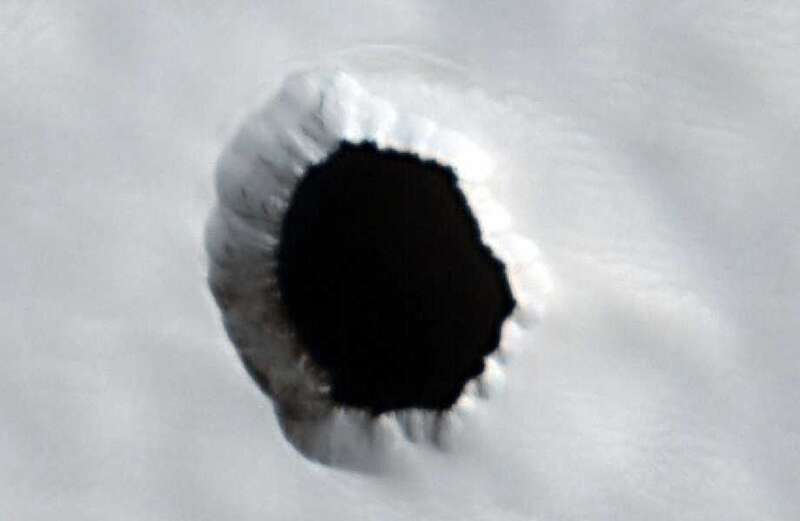A MYSTERIOUS hole has appeared on the surface of Mars.
An image of the pitch-black hole was captured by Nasa - and its left scientists theorizing about what could be hiding inside.



The picture was captured by the High-Resolution Imaging Science Experiment (HiRISE) camera on Nasa's Mars Reconnaissance Orbiter several years ago.
The hole is located in the Arsia Mons region, which is a dormant volcano on Mars, according to Universe Today.
While just several feet across, the outlet reports that the pit is about 584 feet deep.
 Charming UK village is 'UFO hotspot' with 'NASA scientists showing interest'
Charming UK village is 'UFO hotspot' with 'NASA scientists showing interest'
Because the area was an active volcano in the past, the region is full of pits and other features.
Pit craters in the Arsia Mons region may typically be empty or collapsed lava tubes - but there's some uncertainty about what this hole contains due to one detail.
The image showed a lighter side wall in the hole, which means that the opening is likely a cylindrical pit.
Because of the shape of the hole, determined by the side wall, the pictured hole might not be a lava tube or entrance to a cave - it might just be a pit or shaft.
However, if it's a collapsed section of a lava tube, which is called a skylight, it could lead to a large underground cavern.
Similar features are found on Hawaiian volcanoes as a result of an underground collapse.
Pit craters form as volcanoes erupt and the ground collapses.
However, in Hawaii, the pit craters are much deeper than the Mars hole, ranging from 20 to 610 feet deep and up to 3,740 feet wide.
More exploration on Mars will be needed to determine what's under the mystery hole - and scientists might soon be heading to the planet in a plasma rocket.
NASA'S MEGA PLASMA ROCKET
Nasa's landmark rocket hopes to take astronauts to Mars in a journey that lasts just two months - which is less than half the time that it currently takes.
 Astronomer leads hunt for Northern Lights 'sound' rarely heard in the aurora
Astronomer leads hunt for Northern Lights 'sound' rarely heard in the aurora
The Pulsed Plasma Rocket (PPR), which is under development by Howe Industries and funded by Nasa, would revolutionize the process of going to Mars.
"The future of a space-faring civilisation will depend on the ability to move both cargo and humans efficiently and rapidly," Nasa said in a statement.
"However, no such technologies are currently available."
The system would also require much less fuel than traditional rockets as fuel is currently one of the biggest obstacles in traveling to Mars.
The PPR will also allow much heavier spacecraft with shielding to protect against harmful Galactic Cosmic Rays.







































